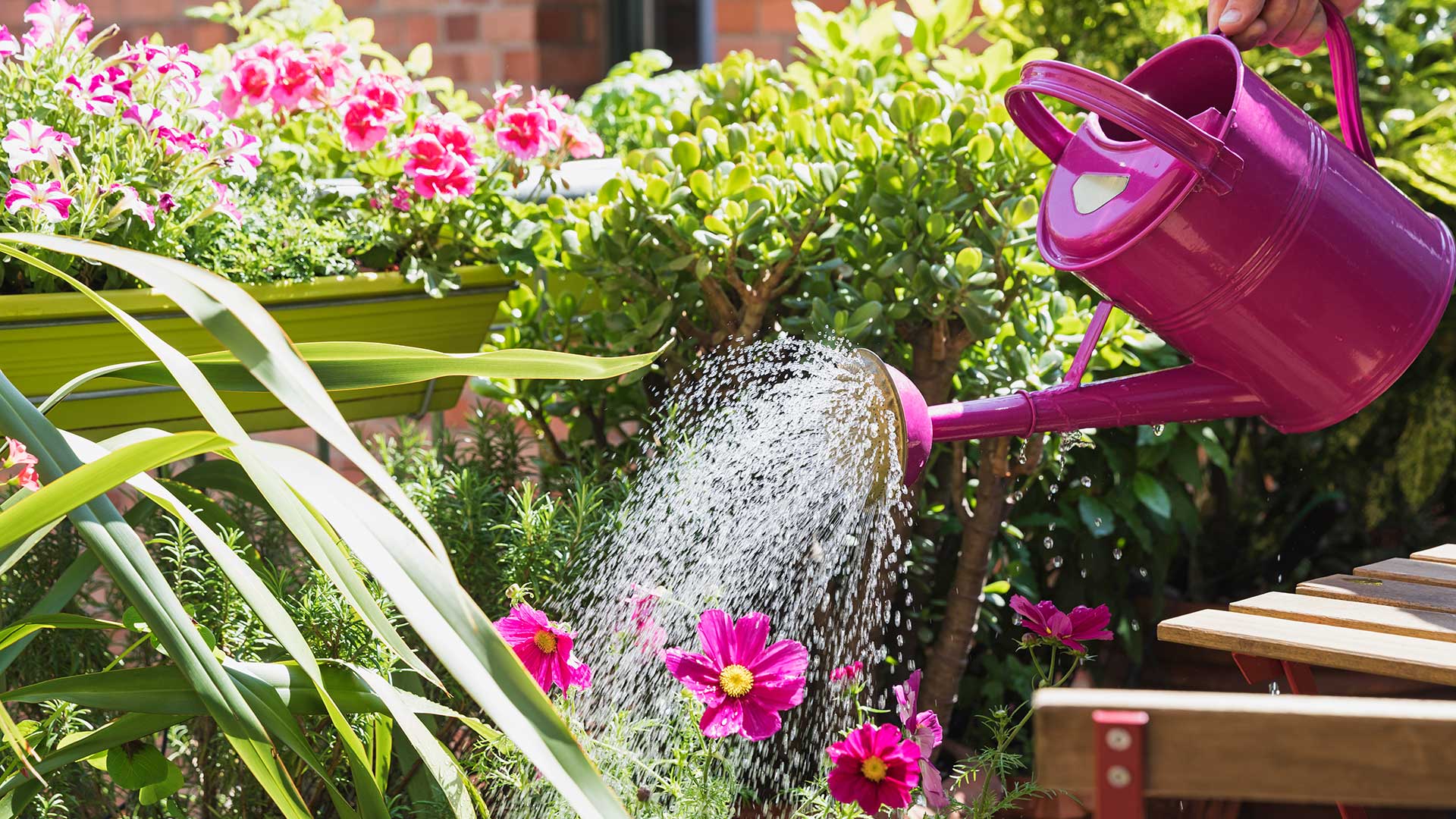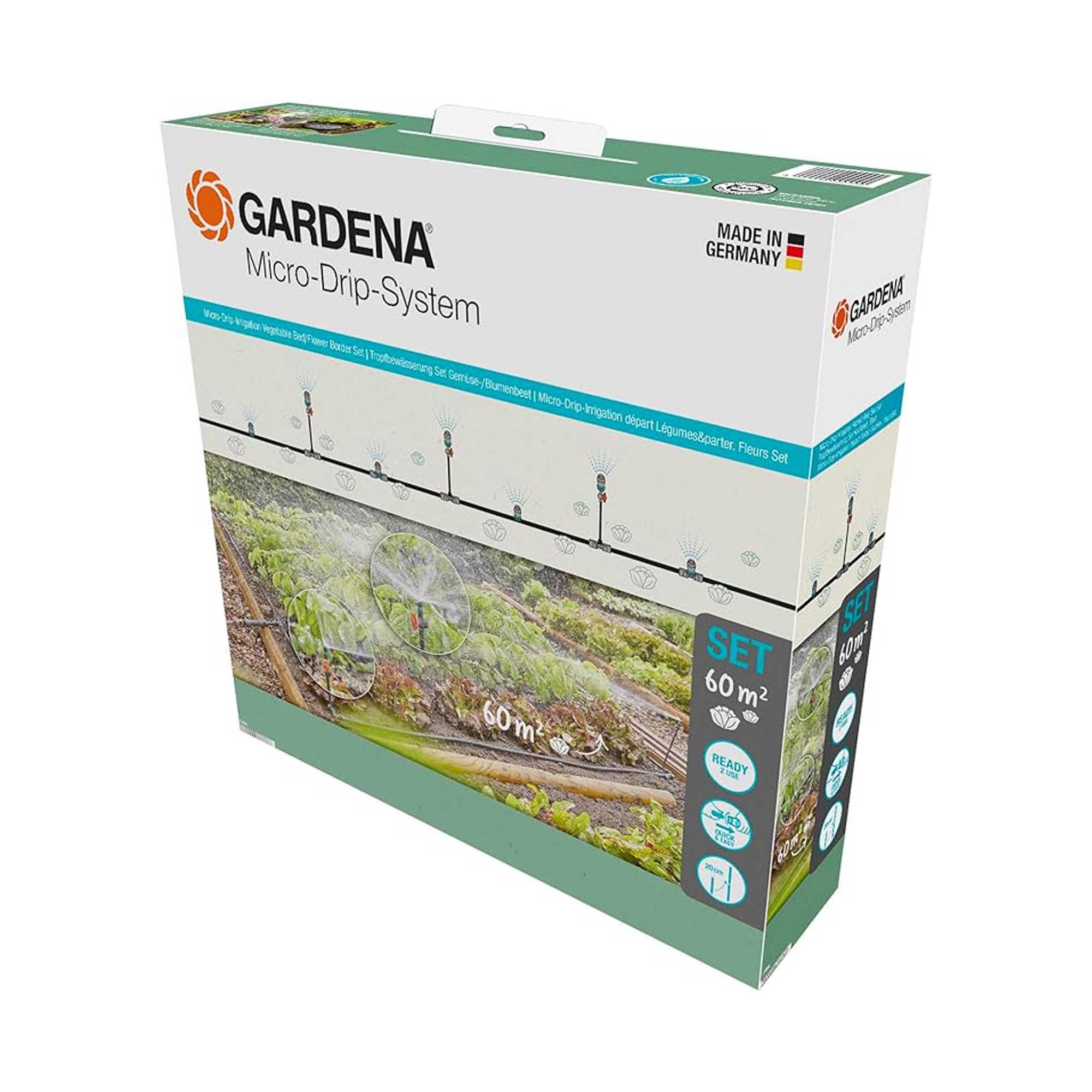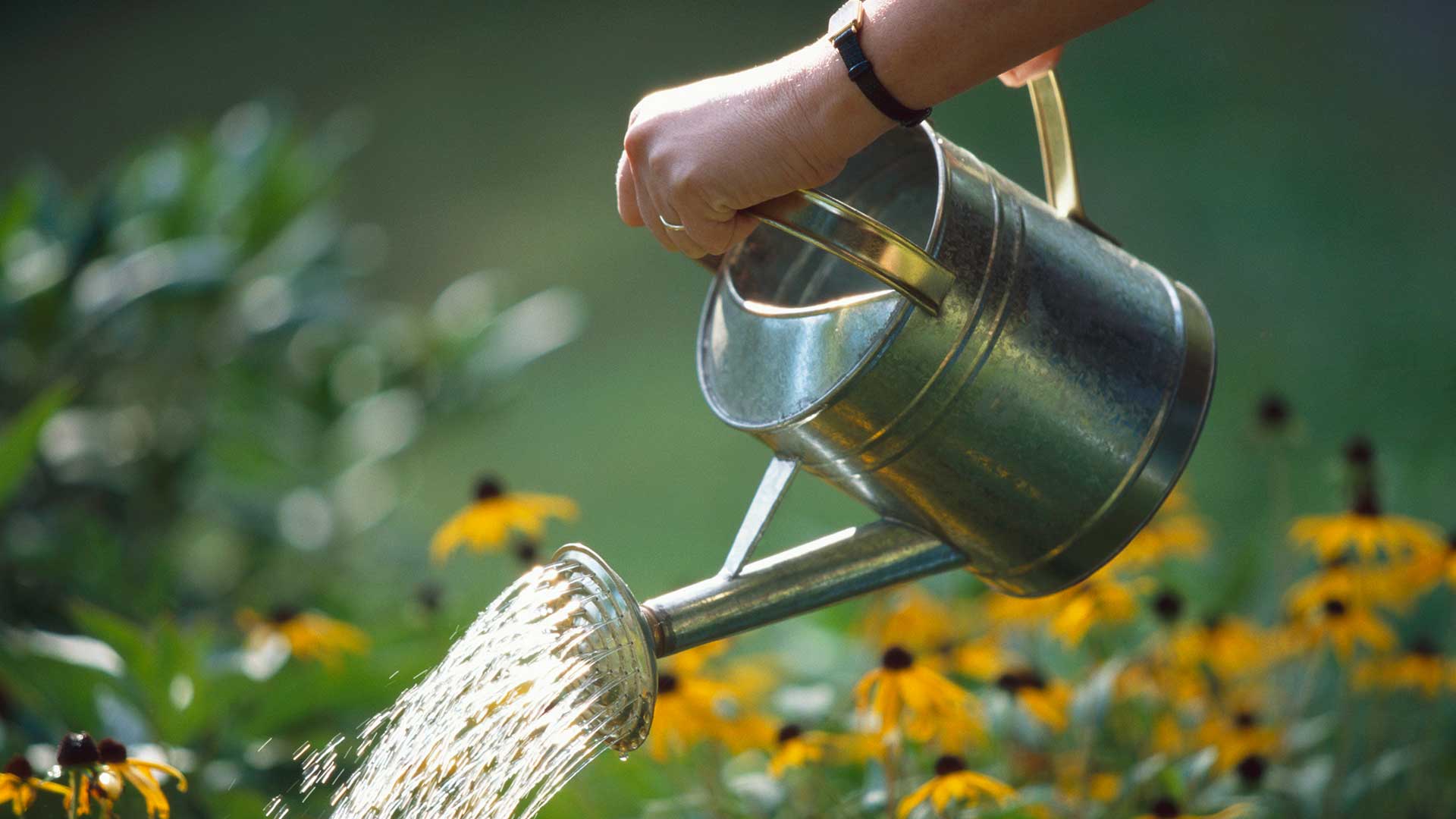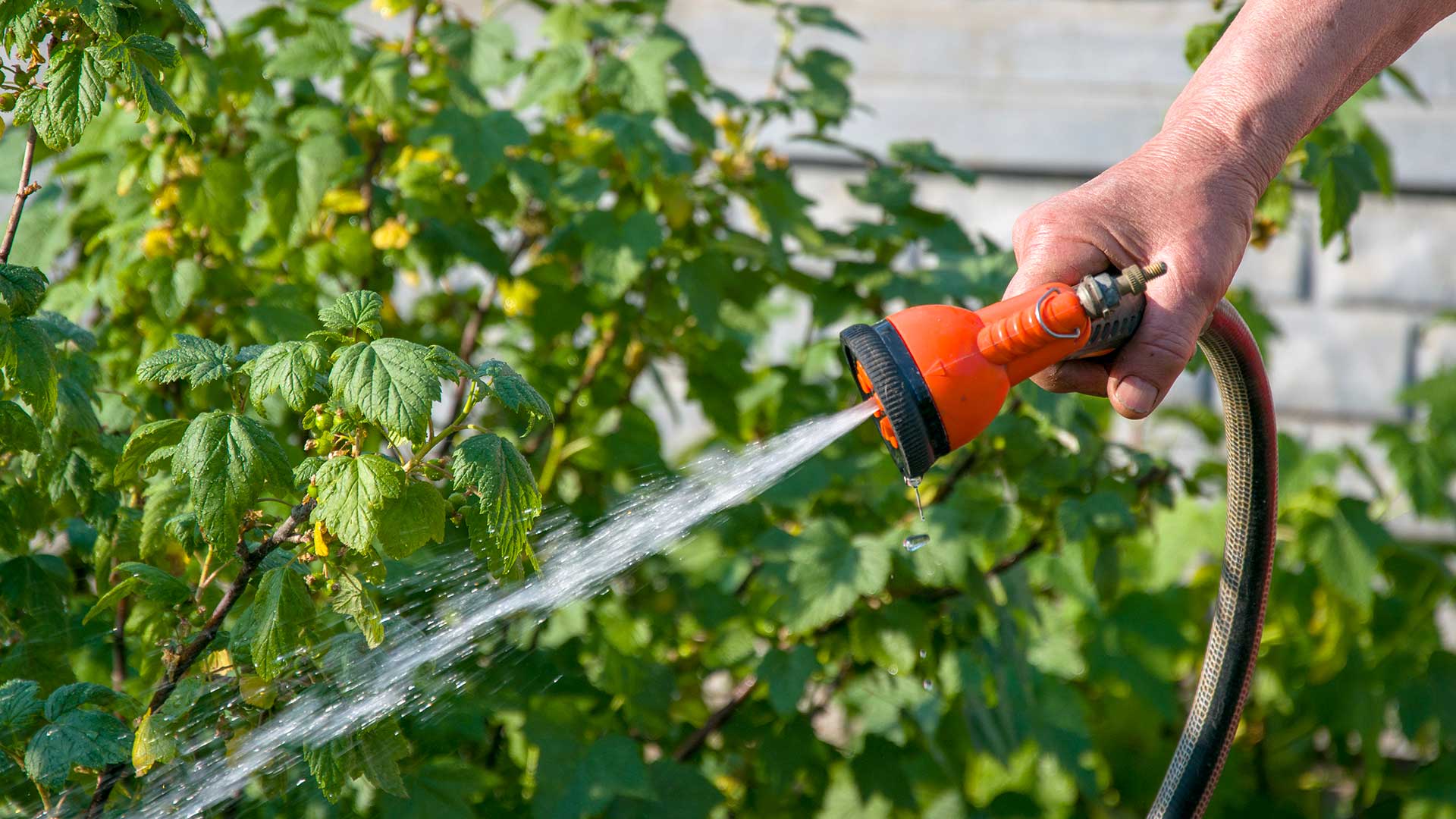
You may think you know how to water garden plants already. After all, how complicated can it be? But there are a few tips and tricks that might come as a surprise.
While rain can hydrate borders and raised beds, you’ll need to give your precious plants a helping hand when the weather dries up. This is particularly the case during hot summer months, and if you’re trying out some container garden trends in your outdoor space.
Below, you'll find plenty of useful advice from gardening professionals for getting the best results, including tips on tools and the best time of day to carry out the job.
Experts share tips on how to water garden plants – both in pots and in borders
Keep your alluring plants in top health with the following tips, whether you're growing them in containers on the patio or in flowerbeds alongside the lawn.
1. Choose the best tools for the job

A watering can, such as this classic 9-litre design from Sarah Raven, can be great for hydrating small flowerbeds and patio container plants. But, for larger areas, you'll need to refill it often, resulting in a lot of to-ing and fro-ing.
An alternative and low-maintenance option that works well for raised beds and borders is a drip irrigation system.
Sarah Bentham of Gardena explains how these enable water to gently drip feed the soil, reaching the roots of the plants, where it’s most needed. This method helps to eliminate overwatering and excess evaporation and promotes healthy plant growth, she adds.

As another option, Richard Ferguson of Hozelock suggests using a spray gun (which attaches to the end of a hose) with multiple spray patterns, to cover a wider range and suit each plant or flower type.
If you have hanging baskets in your garden, one of the best approaches is to use a long-handled watering lance on a light spray setting, Richard continues. This allows the water to seep into the soil so that the plants' roots can take more of it in. An example is the Hozelock Telescopic Lance Spray Plus 140, available from Amazon.
"An alternative way to water hanging baskets is to take them down and soak them in a bucket for 30 minutes before rehanging," he adds.

RRP: £17.98 | This hose attachment from Hozelock features a flow adjuster and five spray patterns, including a fine rose suitable for watering seedlings.

RRP: £51.26 | This irrigation kit from Gardena is perfect for watering flower and vegetable beds of up to 60 m² and is easy to install.

RRP: £12.99 | This weather-resistant plastic watering can from Accurate has a large capacity and includes a detachable sprinkler rose.
2. Consider the type of water you're using
While tap water can be used to water plants, using harvested rainwater is a better option for a more sustainable garden. As Sarah highlights, it's free – and an excellent choice for plants and the planet.
So, if possible, consider installing a water butt in your plot, which will collect the run-off from the roof of your home, greenhouse, or shed. Keep it covered to deter mosquitoes. This water butt from Amazon has a lid included.
It's also possible to save greywater from household usage (such as baths and showers) to use on some plants, notes Charles Carr of Hillier Garden Centres. "It should be used within 24 hours of collection to limit bacterial development," he says. "You do not need to worry about any contaminants like shampoo or soap, as your plants’ soil acts as a very effective filter," he continues. "However, greywater is not safe to drink and should not be used to water edible crops."

3. Pay attention to your watering method
With many gardening tasks, such as mowing a lawn and deadheading plants, it's important to get the technique right. Watering is no exception.
Charles recommends giving your plants a good soaking, which will encourage them to grow deep roots. "Generally, a lower frequency and higher volume of watering is best."
You should direct the water flow to the base of plants, he advises. "Don’t soak the leaves, as this encourages disease whilst thirsty roots may miss out." He recommends letting the water sink down into the soil, then repeating two or three times until the water no longer goes down quickly.
Ensure you water all around the plant, too – "watering on one side all the time may result in uneven growth."

FAQs
How often should you water garden plants?
The frequency that you need to water your garden depends on multiple factors, such as the weather and the type of plants you're growing. Watch out for limp or curling leaves, as these are signs of dehydration, Sarah notes. You can also check the feel of the soil, or use a moisture meter, Charles says.
Charles continues: “Containers and hanging baskets dry out much more quickly than garden beds and borders, so if you only have a few minutes to devote to watering, it’s best to focus on these." In the height of summer, these may need watering once or even twice a day.
"Plants in direct sunlight or a windy spot will also need more water," Charles continues. "Anything you have planted this year needs a little more TLC watering-wise, too. Until plants become more established, they require more care and a good soaking a few times a week."
On the other hand, some plants require much less water, Charles points out. "Thyme, for example, is frequently overwatered." Such drought-tolerant picks are ideal if you're looking to cut down on maintenance, and often work beautifully alongside Mediterranean garden ideas.
When is the best time of day to water plants?
Sarah says that watering in the morning is recommended where possible. This is when the soil is coolest, she explains, so your plants can enjoy hydration without evaporation. "As the sun rises, plants begin transpiring, drawing water up through their roots and out – therefore the morning is a great time to ensure they will stay hydrated throughout the day," she adds. Likewise, the morning is the best time to water a lawn.
"Evenings are also fine to water as the weather cools down," Sarah adds.
How can you help your garden soil retain moisture?
Charles recommends mulching your garden beds to help the soil retain moisture during the summer months – plus, it will serve to suppress weeds at the same time. "To apply mulch, use a layer of materials such as wood chippings, well-rotted manure, or damp leaves on already moist soil. As this decomposes, the nutrients from these materials are released," he adds.
For containers, he recommends using water-saving crystals – a useful gardening tip. These increase in size when watered and slowly release moisture over time to help your plants thrive during the heat, he explains. An example is the AquaGel crystals available at Hillier.
Knowing how to water garden plants properly is crucial, whether you're tending to a cottage garden or prefer a more contemporary look. With the above tips, you can ensure your space looks its best in time for hosting summer BBQs.







